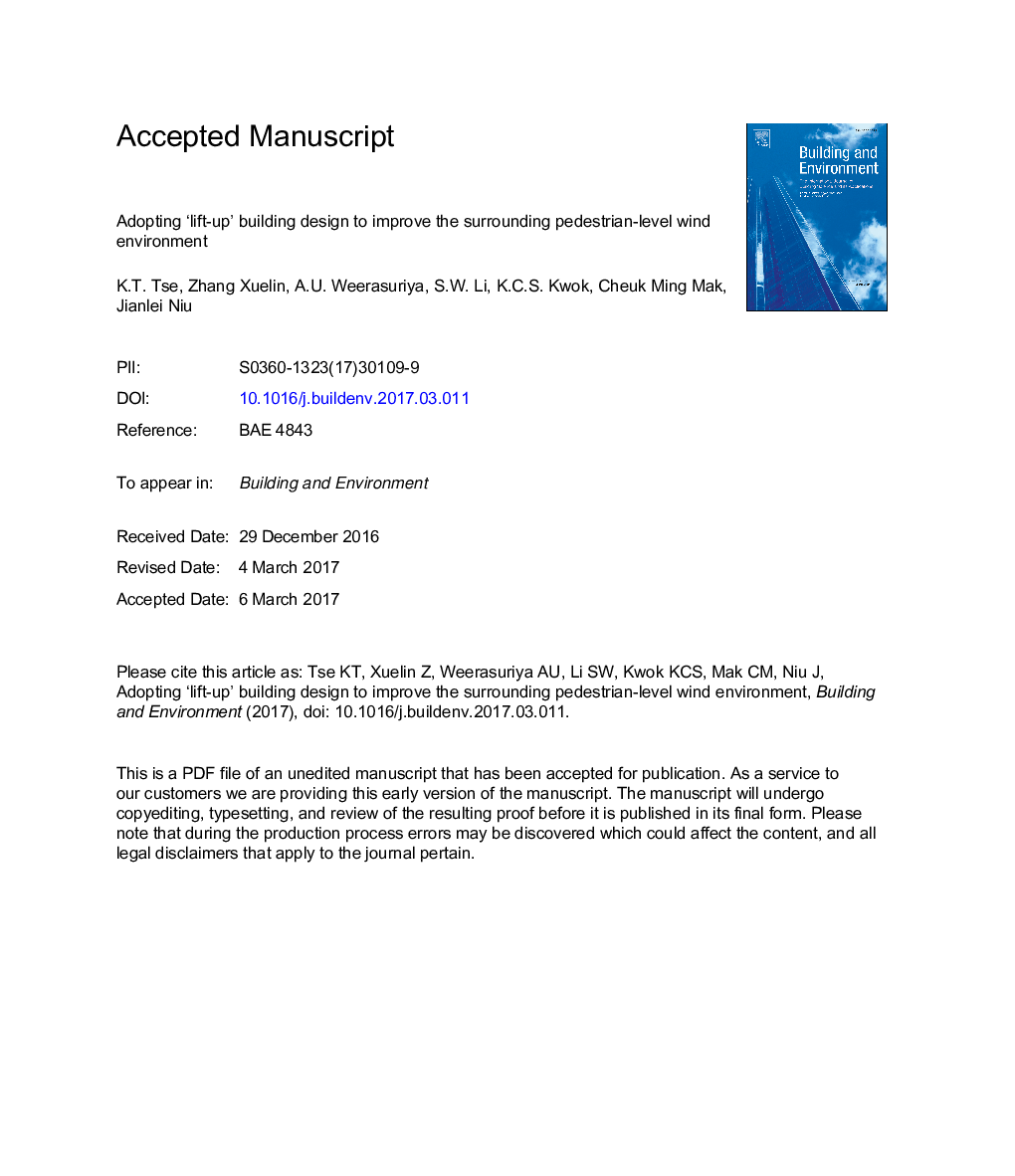| کد مقاله | کد نشریه | سال انتشار | مقاله انگلیسی | نسخه تمام متن |
|---|---|---|---|---|
| 4917310 | 1428375 | 2017 | 37 صفحه PDF | دانلود رایگان |
عنوان انگلیسی مقاله ISI
Adopting 'lift-up' building design to improve the surrounding pedestrian-level wind environment
ترجمه فارسی عنوان
تصویب طرح ساختمان "بلند کردن" برای بهبود محیط اطراف در محیط اطراف در اطراف
دانلود مقاله + سفارش ترجمه
دانلود مقاله ISI انگلیسی
رایگان برای ایرانیان
کلمات کلیدی
ابعاد ساختمان، ساختمان "بلند کردن"، ابعاد اصلی بالا بردن، محیط باد در سطح عابر پیاده، آزمون تونل باد،
ترجمه چکیده
مکانهای مدرن مدرن با ساختمان های بلند و بلند فاصله انداخته می شوند که گردش هوا را در سطح عابر پیاده محدود می کند. کمبود گردش هوا ناشی از ایجاد ناخالصی های هوای آلوده کننده هوا و ناراحتی های گرما در تابستان است. برای بهبود گردش هوا در سطح عابر پیاده، ممکن است ساختمان ها به شکل "بلند کردن" طراحی شوند که در آن ساختار اصلی توسط یک هسته مرکزی، ستون ها یا دیوارهای برشی پشتیبانی می شود. با این حال، فقدان دانش در مورد تاثیر طراحی "بلند کردن" در محیط اطراف باد محدود استفاده از ساختمان های "بلند". هدف از این مطالعه بررسی تأثیر ساختمان های "بلند کردن" و ابعاد آنها بر روی محیط های بادی عابر پیاده با استفاده از تونل های باد است. یک مطالعه پارامتری با استفاده از مدل های ساختمان 9 "بلند" با ارتفاع و عرض های مختلف هسته ای انجام شد. نتایج با محیط اطراف باد یک ساختمان کنترل با ابعاد مشابه مقایسه شد. نتایج نشان می دهد که ارتفاع هسته «بلند کردن» مهمترین پارامتر است و منطقه و بزرگی مناطق کم و کم سرعت باد در اطراف این ساختمان ها را تعیین می کند. بر اساس نتایج آزمون تونل باد و یک معیار راحتی انتخاب شده، ابعاد هسته مناسب می تواند برای انتخاب شرایط مناسب باد در نزدیکی ساختمان های بلندتر انتخاب شود.
موضوعات مرتبط
مهندسی و علوم پایه
مهندسی انرژی
انرژی های تجدید پذیر، توسعه پایدار و محیط زیست
چکیده انگلیسی
Modern megacities are teeming with closely-spaced tall buildings, which limit air circulation at the pedestrian level. The resultant lack of air circulation creates poorly ventilated areas with accumulated air pollutants and thermal discomfort in the summer. To improve air circulation at the pedestrian level, buildings may be designed to have a 'lift-up' shape, in which the main structure is supported by a central core, columns or shear walls. However, a lack of knowledge on the influence of the 'lift-up' design on the surrounding wind environment limits the use of 'lift-up' buildings. This study aims to investigate the influence of 'lift-up' buildings and their dimensions on the pedestrian-level wind environments using wind tunnel tests. A parametric study was undertaken by using 9 'lift-up' building models with different core heights and widths. The results were compared with the surrounding wind environment of a control building with similar dimensions. The results reveal that the 'lift-up' core height is the most influential parameter and governs the area and magnitude of high and low wind speed zones around such buildings. Based on wind tunnel test results and a selected comfort criterion, appropriate core dimensions could be selected to have acceptable wind conditions near lift-up buildings.
ناشر
Database: Elsevier - ScienceDirect (ساینس دایرکت)
Journal: Building and Environment - Volume 117, 15 May 2017, Pages 154-165
Journal: Building and Environment - Volume 117, 15 May 2017, Pages 154-165
نویسندگان
K.T. Tse, Xuelin Zhang, A.U. Weerasuriya, S.W. Li, K.C.S. Kwok, Cheuk Ming Mak, Jianlei Niu,
